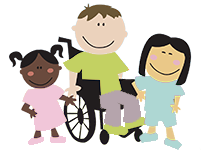What do the terms Articulation and Phonology mean, and when as a parent should I be concerned?
“Articulation…” as stated by the American Speech-Language-Hearing Association, (ASHA), “… is the process by which sounds, syllables, and words are formed when your tongue, jaw, teeth, lips, and palate alter the air stream coming from the vocal folds.” The ability of a young child to develop and produce clear, precise speech by progressing from individual sounds to combining these sounds into meaningful words and ideas, is truly amazing. Although it is natural for children to exhibit sound errors as they learn to speak, most children will correct these errors and develop acceptable speech productions over time. It might be easy to take this outcome for granted unless you have a child who has difficulty producing intelligible speech. Speech errors typically fall into three categories: omissions, substitutions, and distortions. Although some speech production errors, such as, “I wuv my new wabbit” may appear endearing in a young child’s speech, they can eventually become a source of embarrassment as the child matures. Articulation errors can also be extremely frustrating when family members, friends, or teachers are unable to understand a child’s speech. The chart below, taken from Linda Mawhinney and Mary Scott McTeague (2004) Super Duper Handouts, is a general guideline of sound development showing the expectations of when 90% of children have mastered the following sounds:
p, d, m, w, h, n – by 2 years of age
t, b, k, g by – 3 years of age
f, v, y by – 4 to 5 years of age
s, z, j, l, r, sh, ch, th, blends – by 5 to 7 years of age
Although articulation requires the coordinated movements of the “speech machine”, (i.e., a coordination of the tongue, jaw, teeth, lips, and palate along with the air stream coming from the vocal folds) to produce intelligible speech, phonology deals with the rules of our sound system. Although a child may be capable of producing all of the phonemes that are expected, if he or she breaks one of more of the sound production rules their speech could be noticeably impaired or even unintelligible. A common phonological process error is “fronting” where a sound that should be made at the back of the mouth, (i.e., /k/ or /g/) is made at the front of the mouth, producing a /t/ or /d/ sound, (i.e., cat > tat or good > dood). A child may delete all beginning sounds, (i.e., girl > irl) or ending sounds, (i.e., sun > su). The presence of phonological process patterns can have a significant impact on the intelligibility of speech. As with normal articulation development, children may exhibit some of these error patterns with their sounds as speech is developing. It becomes more significant if these error patterns continue to persist over time. the child may be assessed with a phonological process disorder.
If your child’s speech patterns do not show improvement over time; if your child is showing frustration because you or others are unable to understand their speech; or if you are feeling frustrated because you are unable to understand your child’s speech, it may be time to contact a licensed speech-language pathologist to determine if your child has an articulation or phonological process disorder.
Vicki Prouty, MS CCC-SLP

Comments (0)